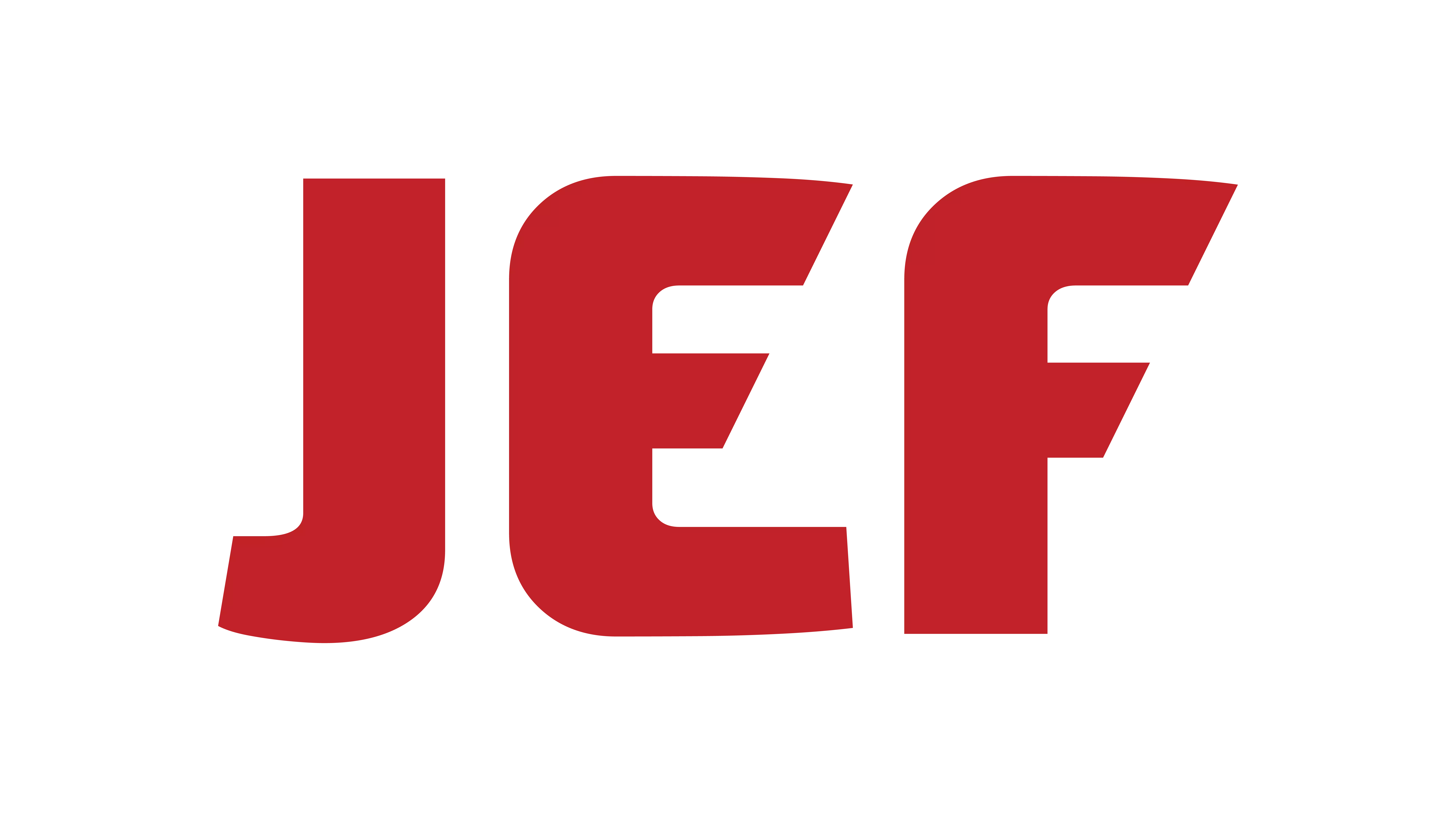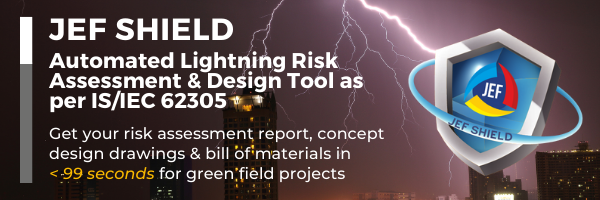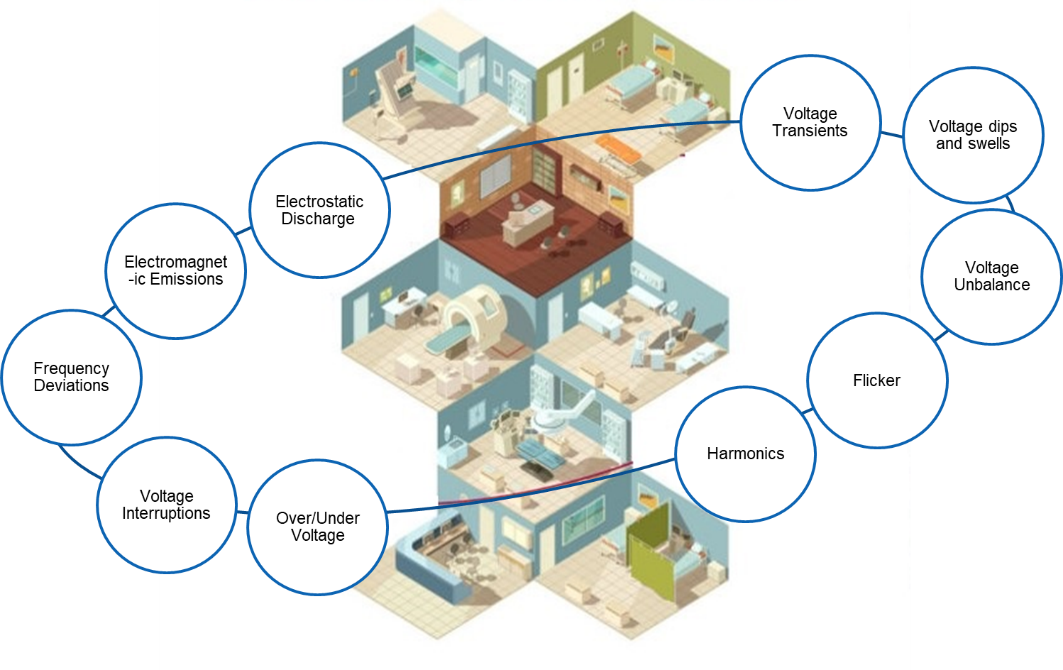Jef’s solution to Indian industries to mitigate lightning risks!
The lightning threat to humankind is well known (even without considering economic losses) because, in a second, there are at least eight lightning strikes globally. Four sources of lightning result in three types of damages.
Nowadays, the risk due to electrical discharge increases. The Bureau of Indian Standards has adopted IEC 62305 as Indian Standard in December 2015, which means it is IS/IEC 62305 and replaces IS 2309 Code of practice for the protection of buildings and allied structures against electrical discharge. India adopted this IEC 62305 as Indian Standard only in 2015, whereas many countries have adopted it as their national standard, many years back.IS/IEC 62305 – Lightning protection has four parts
IS/IEC 62305 – Protection against lightning has 4 parts
IS/IEC 62305-1: Basic Principles
IS/IEC 62305-2: Risk Assessment
IS/IEC 62305-3: Protection of structures & Life Hazards.
IS/IEC 62305-4: Protection of electrical & electronic systems within the structure.
The relation between these 4 parts is best explained in the figure below:
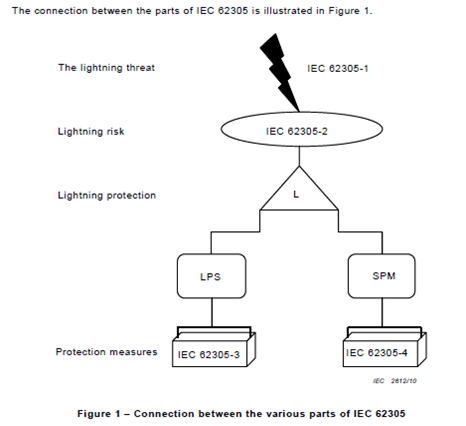
LPS – Lightning Protection System
SPM – Surge Protection Measures
The lightning threat is mainly due to 4 sources of damages
Source S1: Lightning striking the structure
Source S2: Lightning striking near the structure
Source S3: Lightning striking a service
Source S4: Lightning striking near the service.
3 types of damages are :
Damage D1: Injury/death to the living beings
Damage D2: Physical damage to the structure
Damage D3: Failure of electrical & electronic equipment
The above damages have to be controlled within ‘TOLERABLE LEVELS’ so that 4 types of losses can be minimized.
Loss L1: Loss of Human life
Loss L2: Loss of essential public services (wherever applicable)
Loss L3: Loss of cultural damage (wherever applicable)
Loss L4: Economic loss.
Numerous complex formulae involving many variables are used to relate sources, damages, and losses. Jef has created Risk Assessment Software based on the IS/IEC 62305-2 standard. Due to the lack of a third party to assess this program, it was validated by doing a risk analysis based on the four worked-out examples provided in IS/IEC 62305-2 and comparing the results to the output provided in IS/IEC 62305-2. The validation procedure is now complete. Because it is difficult to collect these statistics from customers, the number of thunderstorm days for around 158 places across India. This data is NBC 2016 data.
Since there was no acceptablerisk, to compareconsultants’ over-designed lightning protection before the advent of IS/IEC 62305, the risk for the building that needs to be protected also must be assessed. Solid Explosive and Hazardous Area Buildings are the sole exceptions. (For more information, see another article on the subject.) If the calculated risk is higher than the acceptable level, then a cost-effective preventive strategy can be implemented to bring it down to the acceptable level. It is software's most significant benefit, as iterations also can be performed to reduce the cost of protection to the lowest possible level. If building steel is used as part of the Lightning protection system, you not only have the most economical solution but also the most reliable system whose life will be almost equal to the life of the building.
The risk assessment is conducted in non-hazardous structures to see whether the facility under consideration needs protection. The software can be used to identify the cheapest protection strategy, which might be a single solution or a combination of various solutions if safety is required.
A lightning strike counter keeps track of how many times lightning strikes various types of lightning eliminators and lightning rods. Lightning strikes provide vital information for the upkeep and safety of all structures.
For example, no lightning protection device may require any tiny building surrounded by other higher buildings on all four sides. However, it demands ring earthing or foundation earthing and SPDs- Surge protection Devices for Power & Data lines.
Software Result for the Typical Building with the dimension of (30 x 40 x 30 Meters)

Without any protection measures, Building Calculated value is greater than the tolerable value, Hence Lightning Protection Measures Required.
In the table above, the calculated risk for the building, which is under study, is more than the tolerable limit for 2 factors: loss of human life & Economic loss (displayed in Red color highlighted in Yellow.) To bring the above risks within the tolerable levels, one or any combination of following protection techniques need to be employed.
Mitigation Measures:- as per IS-IEC 62305-2
Installing an LPS of Class IV .According to Table B.2 this reduces the value of PB FROM 1 to 0,
Installing SPDs of LPL IV at the line entrance (lightning equipotential bonding) to protect both power and teleohone lines.According to Table B.7 this reduces the value of PEB (due to SPDs on connected lines ) from 1 to 0.05
Table B.2 - Probability PB that a flash to a structure will cause physical damage
Table B.7 - Value of the probability PEB as a function of LPL for which SPDs are designed
Results after Mitigation:-
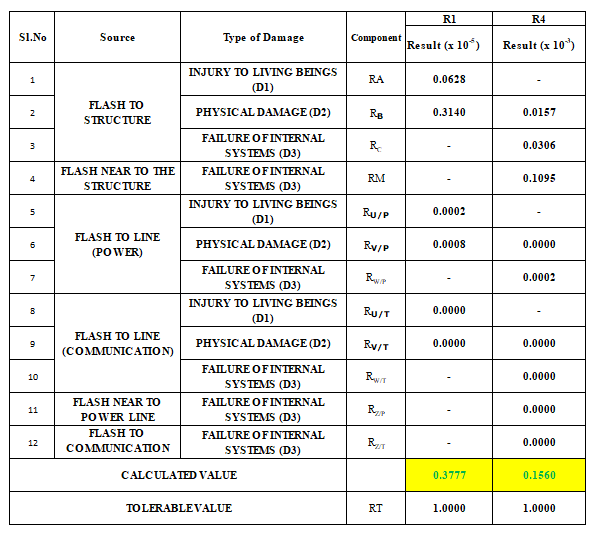
As per the above calculation, the calculated value (R1 & R4) is brought to less than or equal to a tolerable value (RT) as per IS/IEC 62305
Hence it is recommended to implement Class – IV (Level – IV) Lightning protection measures & Level – IV Surge protection device (Type 1+2 SPD at Main Incomer & Type – 2 SPD at Sub-Distribution boards.)
(This is displayed in Green color, highlighted in Yellow.)
Lightning protection as per LPL 1 to 4
• Co-ordinated SPD protection
• Fire protection (manual or automatic)
• Soil equi-potentialisation
• Warning notices
• Electrical insulation
In a broader perspective, Risk assessment using the software helps in 3 following key areas.
1. To claim insurance, in case of any loss, as the protection is done as per IS/IEC 62305, which is followed by CEA, CEIG & Insurance companies to provide compensation.
2. Maintenance Engineers can use this software effectively without the need to know any software language because it is a simple, menu-driven software.
3. Best Cost Vs Performance as iterations can be done to choose the most economical solutions.
For more information, contact us at [email protected]"
